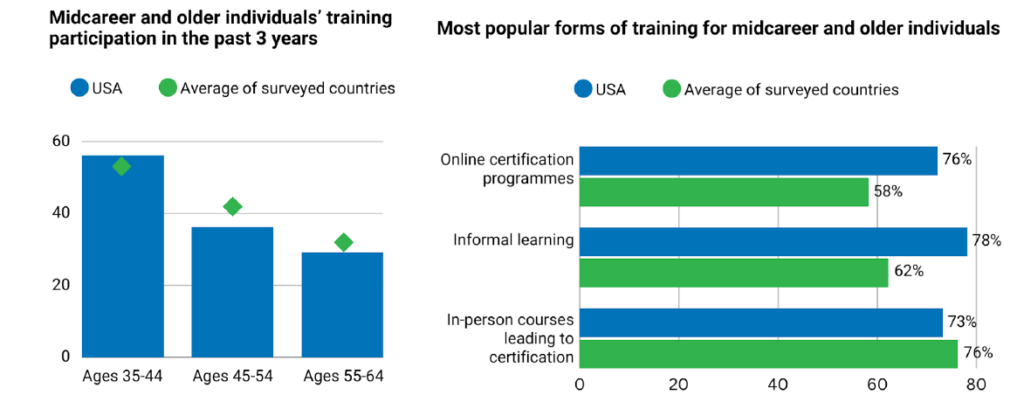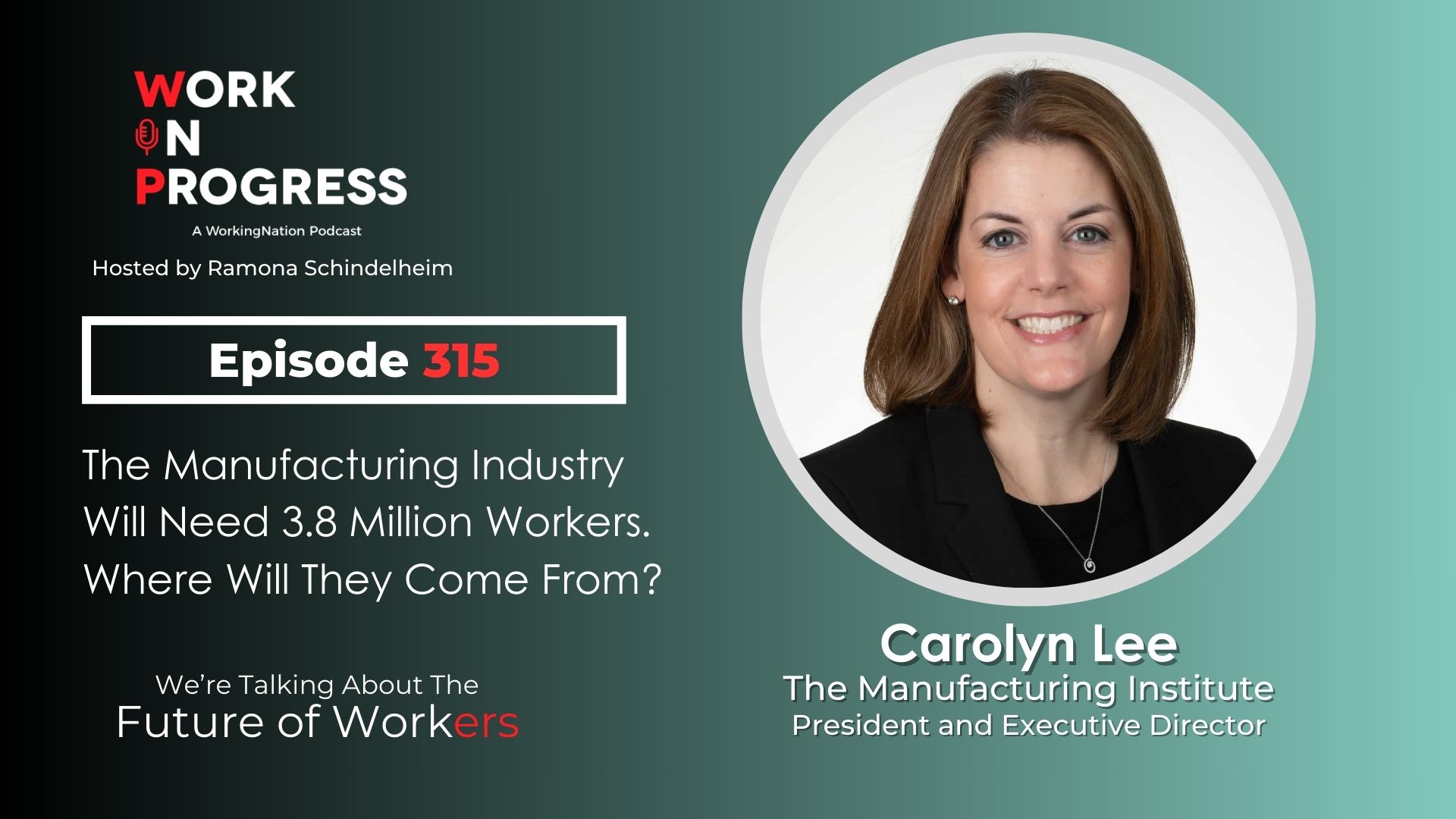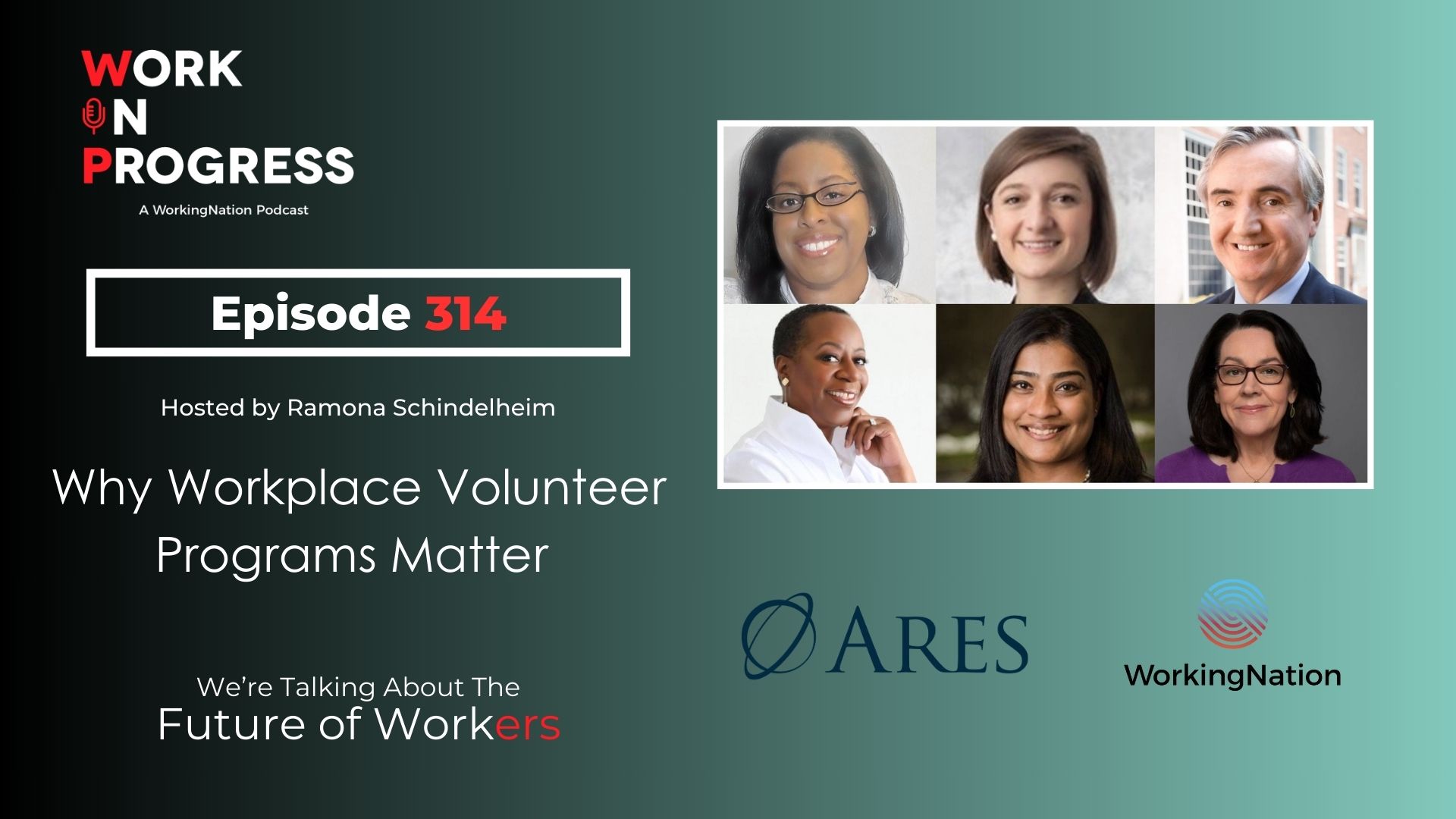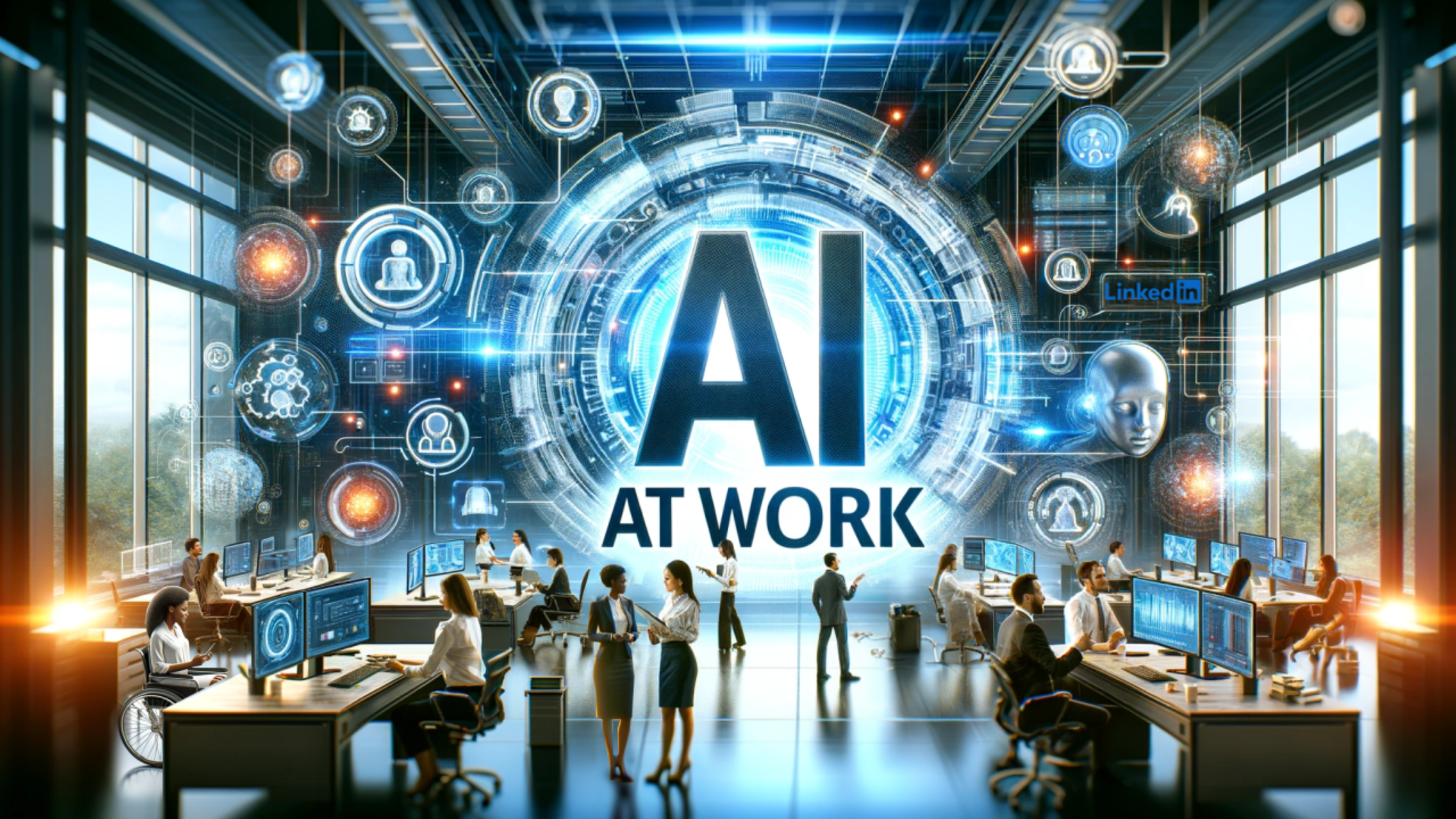The world of work is getting older, but it’s getting harder for midcareer and older workers to find meaningful work and economic success in it.
In the United States, one in four workers is over the age of 55. Globally, people between the ages of 45 and 64 account for 40% of the working-age population in OECD countries, up from 28% in 1990.
“Two powerful and persistent trends – longer lifespans and lower birth rates – all but guarantee that the average age of the workforce will continue to rise,” according to new research.
However, the bias against midcareer and older workers is profound. Workers over the age of 45 make up a large share of the long-term unemployed in OECD countries at 44% on average.
So, how do we empower and enable these “workers to extend their workspan alongside their lifespan?” That’s the question at the heart of new research from the Organisation for Economic Co-operation and Development (OECD) and the U.S.-based nonprofit Generation released this morning in Paris.
The Midcareer Opportunity: Meeting the Challenges of an Ageing Workforce details the findings from a survey of thousand of hiring managers, employees, and job seekers in the U.S., Europe, and the U.K.
The research reveals “unfounded but deep-seated ageism, explores barriers and enablers to career success, and lays out the steps that business, policymakers, and midcareer and older workers themselves can take now to navigate our transition to a more digital and sustainable world,” according to the report.
Age Bias is Impacting Job Seekers
In the broader survey, 79% of hiring managers say they “probably would or definitely would hire someone aged 45-54,” but that result drops to just 50% for job candidates aged 55-65.
Employers in the U.S. appear to be more open to hire the older job seeker, with 88% saying they would hire someone aged 45-54 and 66% saying they would hire someone aged 55-65.
By comparison, 85% of the hiring managers worldwide say they would “probably or definitely hire someone aged 30-44.”
What’s behind the bias? Hiring managers and employers believe people in the midcareer and older age groups are reluctant to try new technologies and skills and are slow to adapt.
But when you ask those same hiring managers how their existing employees age 45+ perform, 89% say they perform the same or better than younger peers. Again, in the U.S., that percentage is higher at 97%.

Don’t Underestimated the Value of Retraining the Older Worker
Many midcareer workers express low confidence in their prospects of being able to make the transition to a new career and aren’t seeking the tools needed to make the job change.
The employers surveyed indicate that they are more inclined to hire older workers who have upskilled to fit the changing nature of work, a fact that older workers haven’t fully embraced.
“There is clear employer preference for candidates with recent, relevant training – 48% of successful midcareer and older job switchers had training in the past three years vs. only 34% of unemployed individuals. However, too few midcareer and older workers prioritize it versus younger peers.
“Midcareer and older workers who are trying to change jobs are more likely to perceive age as a barrier than those who already managed to find a new one. Sixty percent (60%) of potential switchers say they perceived age as a barrier, compared to only 49% of successful switchers,” the research indicates.
“Midcareer and older workers undervalue training in favor of work experience, and only 38% of those over age 45 have participated in training in the past three years. Training participation decreases with age – and this holds true across education levels,” continues the report.

‘Keeping more midcareer and older individuals in work will deliver large societal pay-offs’
The Midcareer Opportunity makes the argument that upskilling and retraining the midcareer and older workforce has outsized benefits to society, including by creating a more stable labor market. It points out that since the COVID pandemic, there has been a labor shortage.
“Redeploying midcareer workers who are seeking new options, hiring currently unemployed older workers, and keeping all older workers employed for longer would help reduce existing labor bottlenecks. In the long term, it would also stabilize or improve the supply of talent,” according to the report.
The OECD and Generation outline 13 actions, or “micro-interventions,” that employers, midcareer and older individuals, and policymakers can take to capitalize on the midcareer opportunity.
Here are a few key recommendations:
For Employers
- Proactively attract midcareer and older applicants.
- Adjust hiring processes to evaluate the strengths of midcareer and older candidates.
For Midcareer and Older Workers
- Seek out job-relevant training and certifications.
- Search for jobs in priority channels for employers.
Policymakers
- Provide information and guidance to support job changes for midcareer and older workers.
- Fund training and skills development at older ages.
You can read all the recommendations and other findings in the full report here: The Midcareer Opportunity.
The Organisation for Economic Co-operation and Development (OECD) is an international organisation that “works to build better policies for better lives.”
The nonprofit Generation works to “transform education to employment systems to prepare, place, and support people into life-changing careers that would otherwise be inaccessible.”











